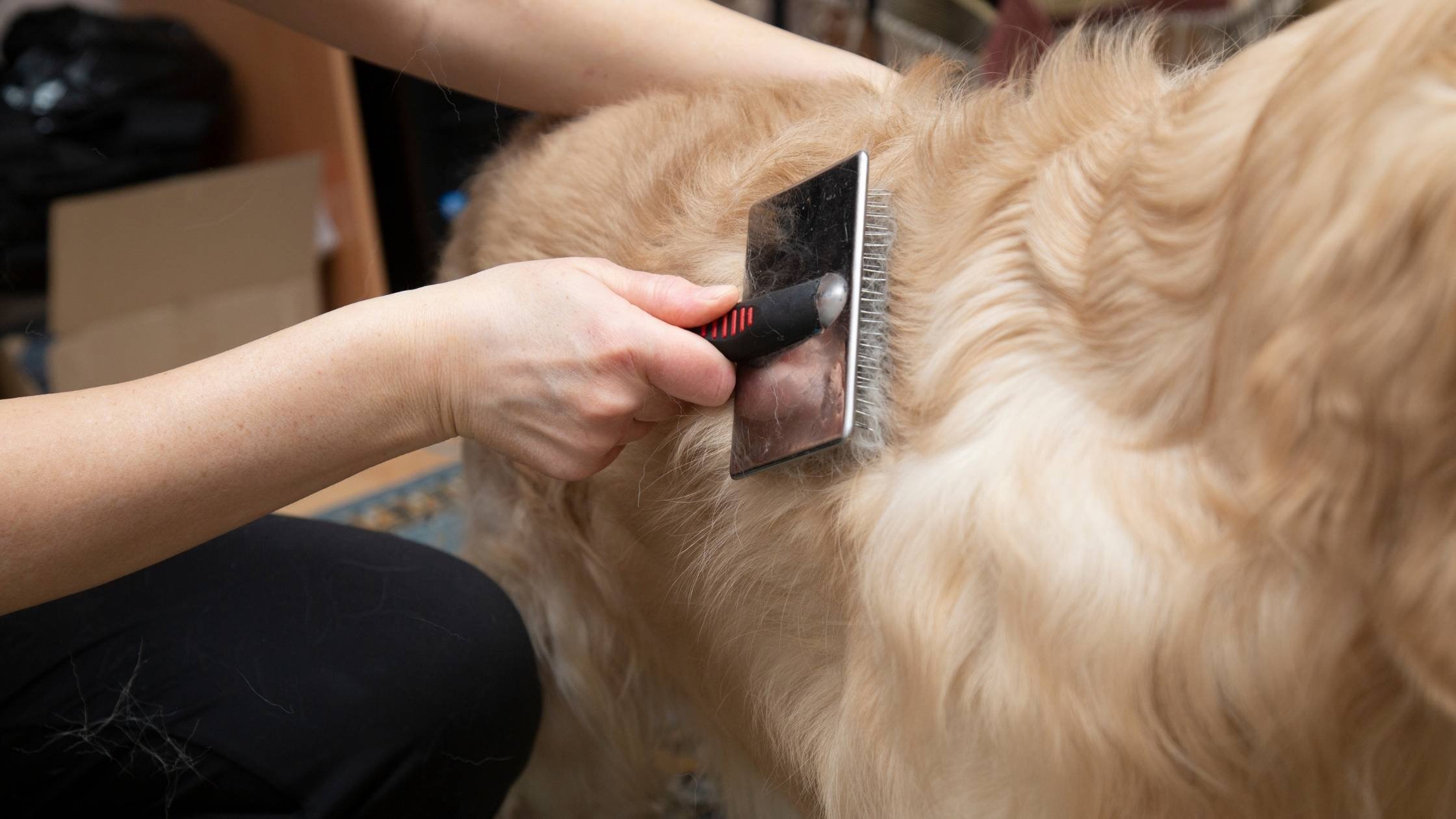What do groomers do to deshed a dog
When deshedding a dog, a groomer must know the basics of what is causing shedding to happen.
Is the shedding happening naturally, or is it caused by other factors?
Shedding is a natural cycle that occurs throughout the year on every dog's coat. It is when the old is replaced with the new as ordained by the dog's health and age. Indeed, there are times when the replacement cycle is more evident to pet parents due to environmental changes. We refer to this in the pet industry as "shedding season," and it usually takes place in the Spring and Fall when humidity in the air starts to vary.
But shedding can also be caused by other atypical factors:
a chemical imbalance
a new diet
changes to the family circle like the arrival of a new pet or a new baby
use of a new product on the coat or skin
Some pet parents have been introduced to the wrong idea that certain breeds do not shed. But that is simply not true. No matter the breed, shedding happens. However, it can be either apparent (hair falls off and is found all over) or disguised (hair does not fall off and clings to other hairs).
Apparent Shedding
To correctly deshed a dog with this type of shedding, a groomer managing this type of shedding needs to be ready to end up covered in hair. This is the most common type of shedding since pet parents immediately notice all the hair floating around that signals when it is time to book a deshedding appointment.
The groomer's typical process to deshed a dog will include a shampoo and conditioner high in water-soluble polymers (like silicone) followed by a high-velocity blowout session. A naturally-based deshedding session is characterized by the groomer opting to use high-quality, plant-based ingredients that lock in moisture and promote a natural cover for the hair strands versus chemical-heavy formulas.
Disguised Shedding
On the flip side, this type of shedding involves a more labor-intensive approach as hair has become detached from the follicle but has not fallen off, usually caught by surrounding guard hairs.
Disguised shedding is more commonly found on curly and double-coated breeds where you may not see much hair on your dog's bed or floating around the home if any at all. Nonetheless, the hair is just becoming tangled on your dog's body and reducing aeration of the skin. Lack of brushing and applying a deshedding treatment will cause the coat to become "compacted," a term used in the industry to describe a coat that is either close or already at a state beyond repair. At that point, emergency grooming is required, and a complete shave-down is performed.
To deshed correctly, the groomer will have to employ the same high-quality shampoo and conditioner and brush continuously, section by section, while pointing air at high velocity directly at the coat section being brushed. A standard tool used during this process is a floor-stand high-velocity dryer like the one pictured below.
Now that you know what a groomer does during a deshedding, you must understand what your groomer requires to do a good job.
Remember, not all deshedding sessions are the same. To protect your friend's overall health and enjoy long-lasting results, always understand the approach your dog groomer will follow during a deshedding appointment.


